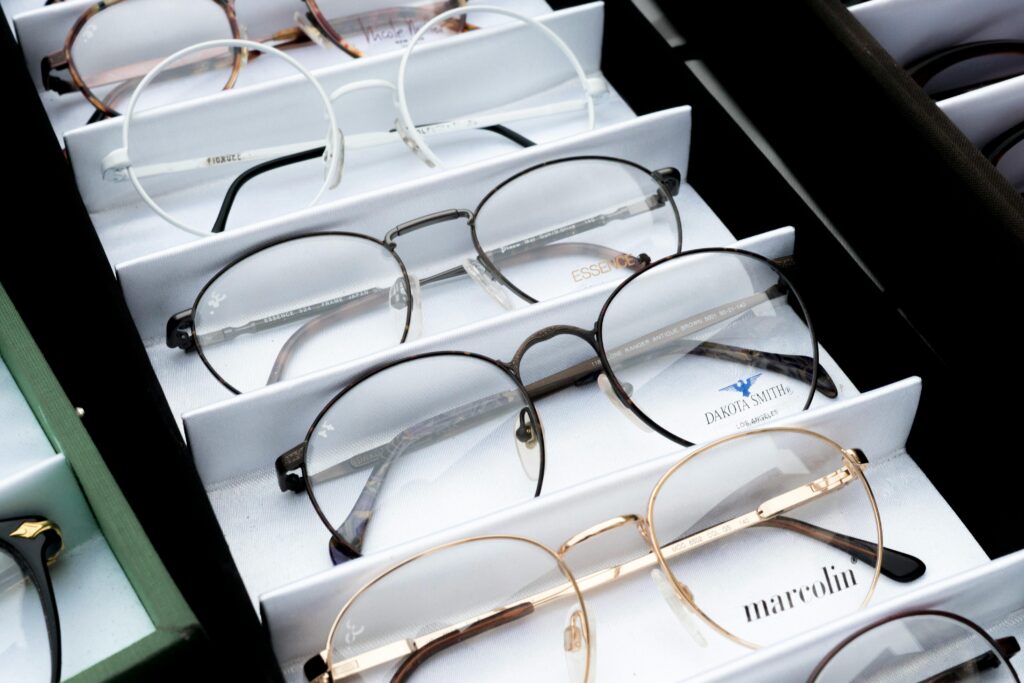Spectacles
A brief introduction to spectacles, their significance in vision correction, and their role in daily life.
History of Spectacles
- Early Beginnings The first spectacle, designed in the late 13th century in Italy, was designed to aid reading for the elderly.
- Evolution Over Time Development through the Renaissance began with Benjamin Franklin’s invention of bifocals in the 18th century—advancements in lens technology and frame designs occurred throughout the 19th and 20th centuries.
- Modern Innovations: Introduction of new materials (plastics, lightweight metals) and technologies (progressive lenses, blue light filtering).
Types of Spectacles
-
- Prescription Glasses: They are designed for vision correction (myopia, hyperopia, astigmatism).
- Reading Glasses: Typically non-prescription, used for close-up tasks.
- Bifocal and Trifocal Glasses: Multifocal lenses for different viewing distances.
- Progressive Lenses: Seamless transition between multiple prescriptions without visible lines.
- Safety Glasses Protective eyewear for various occupations.
- Sunglasses U.V. protection; options include polarized, photochromic, and prescription sunglasses.
Uses of Spectacles
- Vision Correction: We are enhancing visual acuity for everyday activities.
- Eye Protection: They shield eyes from harmful UV rays, dust, and debris.
- Fashion Statement Eyewear as a fashion accessory: trends in styles and frames.
- Digital Eye Strain Relief: Use of blue light-blocking glasses for prolonged screen time.
Importance of Spectacles
- Quality of Life: Enhancing daily activities, work productivity, and overall enjoyment.
- Health Benefits: Prevention of eye strain, headaches, and long-term vision issues.
- Accessibility: We are providing affordable solutions for those with visual impairments.
- Social and Psychological Impact We are boosting confidence and self-esteem through improved vision and style.
Choosing the Right Spectacles
- Consulting an Eye Care Professional Importance of regular eye exams for accurate prescriptions.
- Factors to Consider: Frame styles, lens types, coatings, and personal lifestyle needs.
Fashion and Spectacles
- Trends Over Time: Styles have evolved from round frames in the 1800s to modern geometric shapes.
- Influence of Celebrities and Pop Culture: How Public Figures Shape Eyewear Trends.
- Material and Color Choices: Options available today: metal, plastic, wood, and more.
- Customization: Personalization in lens type, coatings, and frame designs.
Future of Spectacles
- Care and Maintenance of Spectacle.
- Cleaning Techniques: Recommended cleaning solutions and materials (microfiber cloths, lens cleaners).
- Storage Practices: Importance of using protective cases and avoiding extreme temperatures.
- Regular Check-ups: There is a need for routine eye examinations and adjustments to fit.
- Importance of Spectacles
- Quality of Life: Enhanced daily living through improved vision.
- Work and Productivity: Impact on occupational performance and safety.
- Preventive Health: Reducing eye strain and potential long-term vision problems.
Conclusion
- This recap summarizes the significance of spectacle in daily life, encouraging readers to prioritize eye health and consider their eyewear choices
Follow For More Info Mediexpro.com

